Spring has sprung, so that means it’s time to dust off your gardening gloves and clear the debris from your garden. Before you head to your local gardening center, take stock of what’s lying around your house that can make your outdoor (or indoor) space more efficient.
There are plenty of shortcuts in life. Why not use some garden hacks to improve your productivity when taking care of some of your most fragile friends — plants. Just in case you do need a few items, check out these Home Depot and Lowe’s store hacks to save big year-round. Plus, check out our Home and Garden Savings Guide for more great ideas.
1. Turn a plastic bottle into a self-watering garden tool.

There’s nothing worse than coming back from vacation to dead plants. Here’s a simple garden hack to keep them alive while you’re gone. Use a small drill bit or nail to poke 1 to 4 holes into the cap of a plastic water bottle.
If you need to water bigger plants, use a 2-liter bottle as a garden tool, keeping in mind that the more holes you have and the wider the holes, the faster the flow of water. Fill the bottle with water and replace the cap.

Quickly insert the filled bottle into your plant’s soil. You may need to press soil around the bottle to keep it upright. And that’s it! Water will drip slowly out of the bottle’s cap while you’re away.
2. Keep bugs away using citrus peels as a DIY garden remedy.
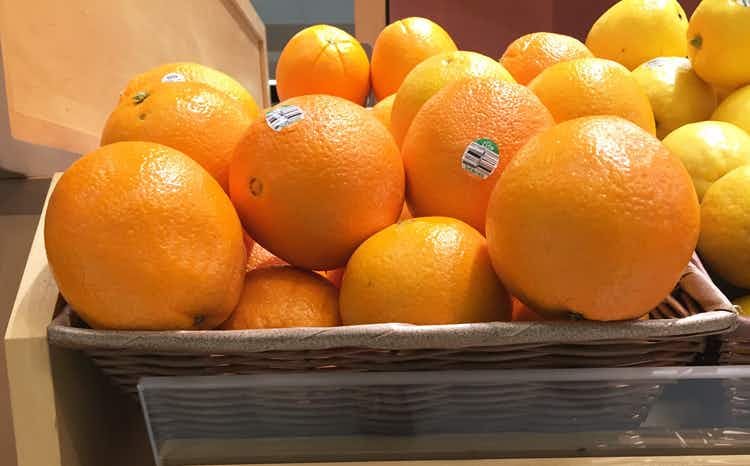
Don’t toss those orange peels just yet! You can use citrus peels as a non-toxic insecticide for bugs and insects. Chop the peels into 1-inch pieces and scatter them on the soil. The peels from citrus fruits have a compound that repels slugs, white flies, mosquitoes, and some furry pets like rabbits and squirrels.
You could also create a citrus spray by drying out the peel, blending it, and adding it to a spray bottle to mist your plants.
3. Repurpose a coffee filter to slow down water drainage in garden soil.

Via Pop Sugar
Who knew that coffee filters were far more useful than for preparing coffee? In the world of garden hacks, the filters can prevent water from running right through garden soil if you first line your pot with one. This idea is great for indoor plants and keeps the drainage holes clog free. If you’re fresh out of coffee filters, pantyhose do the trick as well!
4. Start seeds in empty eggshells for a cheap garden storage idea.

Depending on where you live, sometimes the weather doesn’t cooperate when it’s time to start planting outside. Eggshells and their carton are perfect indoor seed starters.
Once you’re ready to transplant your starts outside, keep the shell on your plant but crush the shell so that the roots can grow though. The nutrients in the shell will feed your plant as it grows.
Egg coupons can help you save even more money as you prepare your garden plants. Plus, find out how to get free seeds.
5. Use stale ice cream cones as biodegradable seed starters.
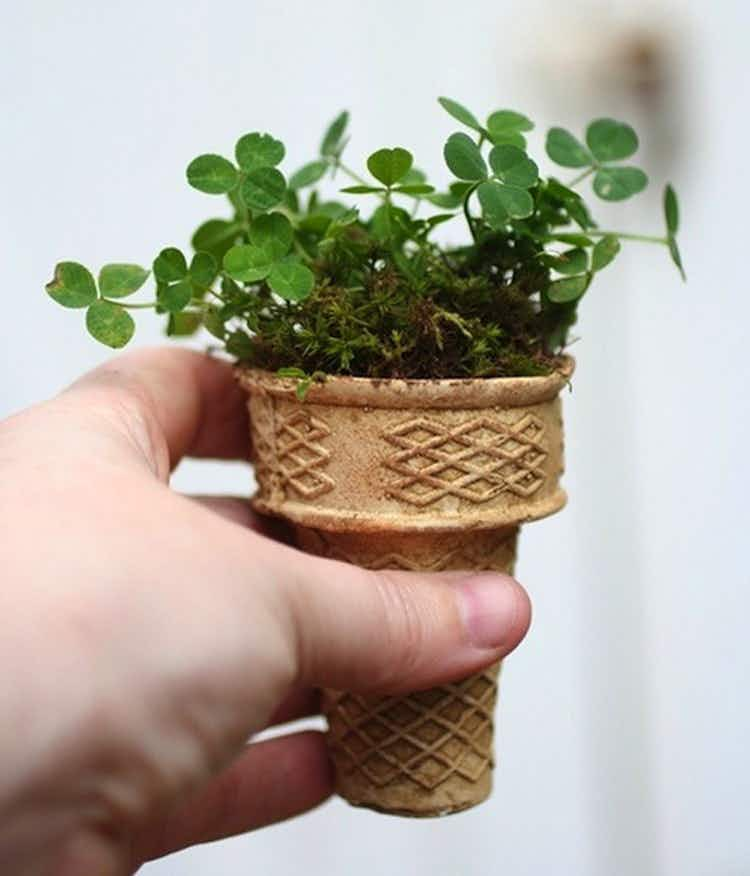
Via Design Mom
Similarly to Tip 4, ice cream cones are a great stand-in for starter seed pots. These sweet treats also make for an environmentally-friendly addition to your garden supply, because they’re completely biodegradable. Just fill the cone with soil and seeds. When your plant gets too big for the cone, just stick the whole thing in the ground.
Doesn’t this tip have you craving ice cream? Head over to the ice cream coupons page to satisfy your sweet tooth.
6. Try baking soda as a garden hack to produce sweeter tomatoes.
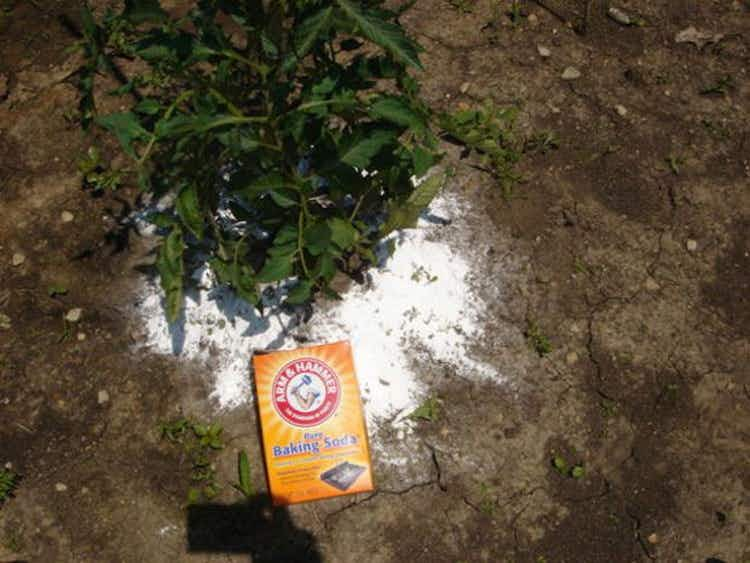
Via Instructables
It’s a staple in household cleaning projects, but it can clean up your droopy tomato plant, too. To use it as a garden hack, sprinkle baking soda around the plant directly onto the soil. The baking soda helps neutralize the acidity in your tomato crop, thus producing sweeter fruit.
Other tips to liven your tomato plant:
- Use an antacid to boost calcium levels. Create a mixture of 1 gallon of water and 1 dissolvable antacid. Spray it on the tomato’s soil to prevent mineral deficiency.
- Sprinkle eggshells to promote growth. The calcium from the shells breaks down and releases the mineral over time. The shells also help prevent end rot and can deter slugs.
7. Cinnamon in garden soil can prevent fungus growth.

It’s time to spice up your outdoor space with a tip that deters bugs and furry animals, and can stop seedling diseases. Cinnamon’s anti-fungal properties don’t just work on humans but work on plants as well. The spice also prevents the growth of wild mushrooms in herb gardens during very humid or rainy seasons.
8. Use coffee grounds as a DIY garden supply to repel slugs.

Caffeinated soil and slugs don’t mix. Coffee grounds are a budget-friendly, organic addition to your garden supply that can be used to keep pests away, because the smell stimulates the slug’s mucus production. Therefore, they don’t approach the area.
Just sprinkle the grounds around the edge of your garden or pot. You can also brew a pot of caffeinated coffee and pour the cooled brew directly into the soil of the plants that you want protected. A small amount is effective so as not to kill the slugs. Coffee grounds can also be used as fertilizer or mulch.
Coffee coupons are readily available when you run out!
9. Or, use crushed-up eggshells in your garden to deter snails.

Via Susan Shaffer
Pests like snails can really wreak havoc on your beloved veggies, leaves, and seedlings. Instead of spending money on toxic snail bait, try a home remedy from food waste.
Eggshells come to the rescue because of their gritty surface. If you create an eggshell barrier around leafy plants, snails and other bugs will hate the sharp texture.
Snails usually come to visit your garden because of the excess dead plants and weeds, so it may be a sign that you need to prune more.
10. Protect young plants from frost using milk jugs as garden remedies.

There’s no need to worry about your fragile plants when late frost hits. Milk jugs turn into a greenhouse garden idea by insulating the plants. Get started by removing the cap from gallon-size milk jugs and cutting off the bottoms with a sharp knife. Place the jug around the plant and push enough soil around the base to prevent the jug from blowing away.
When frost season is over, carefully remove the jugs. In the meantime, go ahead and water your plants through the jug’s top pour hole.
11. Use a milk jug as a watering can garden tool.

Plastic milk jugs again? Yes, they’re the ideal hack for gardeners because most of you have one in use, ready to be upcycled. Why pay for a fancy watering can when you can create your own (decorate it with a Sharpie to make it special)? Poke holes in the plastic lid, fill the jug with water, and pour over your dry plants.
12. Turn homemade vegetable stock into a garden hack to hydrate plants.

In the summer and fall, some cities put restrictions on water usage, so you have to think creatively about garden ideas when it comes to watering. One idea is to use the leftover water from boiled or steamed vegetables (or, boiled egg water) to fertilize your plants. Just make sure to cool the water first.
13. Use a blender to turn food waste into a liquid compost garden idea.

This garden idea requires your full attention span next time you’re preparing meals. Save your leftover food scraps in Ziploc bags until you’ve accumulated a decent amount to blend. Puree the scraps with water and spread it throughout your garden. You may want to add water and work the soil with a small shovel to ensure all nutrients are absorbed.
When you’re trying this method of DIY composting, be sure not to include:
- Meat or fish bones or scraps
- Dairy products
- Pet waste
- Fats or oils
- Yard waste with chemicals
- Plants with diseases
- Charcoal ash
14. White vinegar is a clever garden tool that can kill weeds.
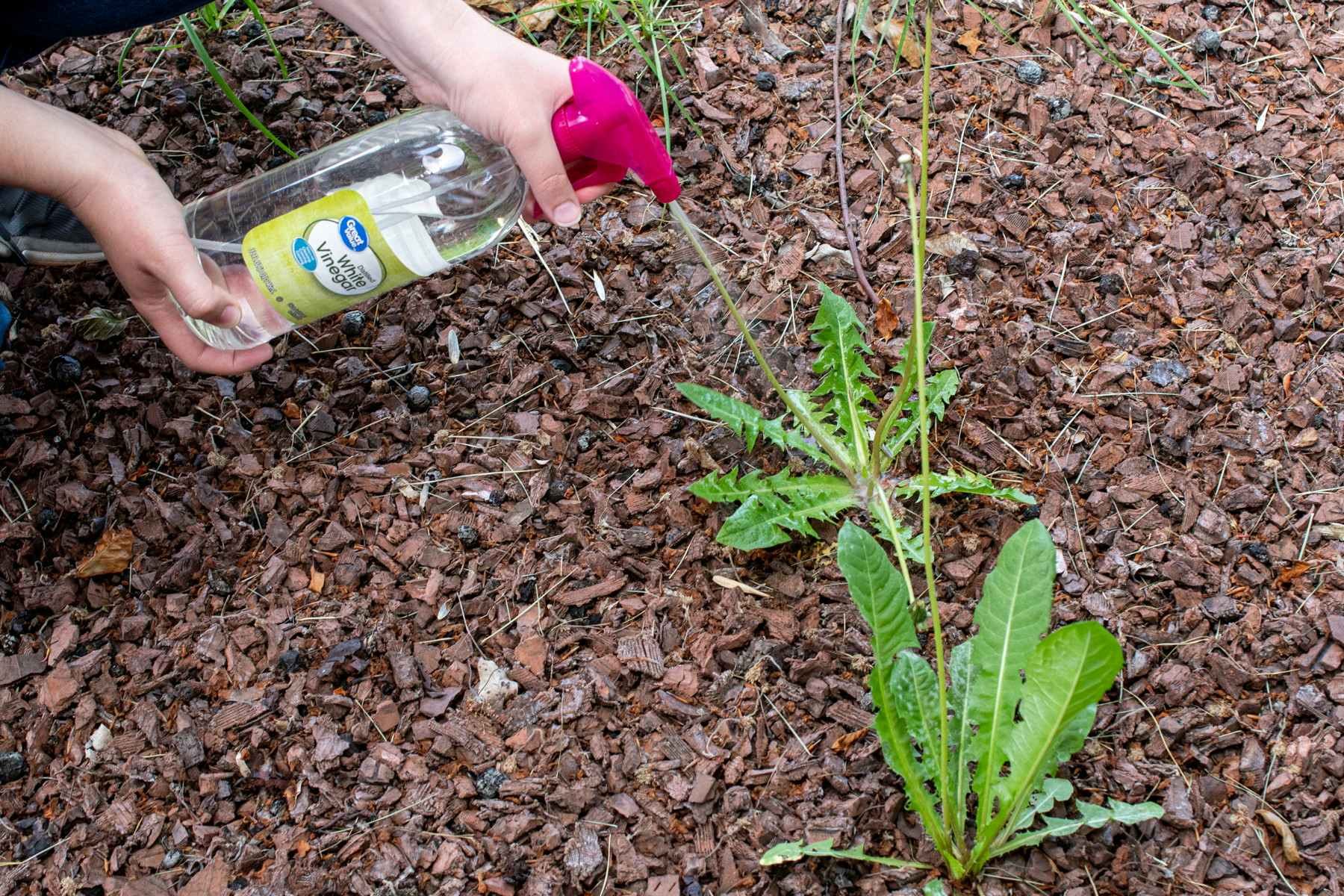
Like baking soda, vinegar is a tried-and-true hack for your garden plants. To get rid of unsightly weeds, spray them with vinegar. The higher the acidity in the vinegar, the faster it’ll work. The acid removes the water from the plants, therefore, killing it by drying it out.
Here are 10 more homemade weed killers that actually work.
15. Get perfectly spaced plants with a toilet paper garden tool.

Seed tape may be difficult to find and costly, but with the help of toilet tissue, it’s a garden tool that you can easily recreate. Plus, it’s biodegradable. Here’s how to get it done:
- Measure out a length of toilet paper and use a ruler to create evenly spaced marks indicating where your seeds will go (try every 2 inches for smaller plants like carrots and lettuce).
- Create a paste with 2 tablespoons of white flour and 1 tablespoon of water, making sure the paste isn’t too thin. Use a toothpick to dab a bit of the glue onto the toilet paper.
- Place the seeds on the glue and allow the glue to dry before rolling the paper back up and transporting it to your garden.
- When you’re ready to plant, unroll the paper onto prepared soil and cover the seed paper with the amount of dirt recommended on the seed packaging. Keep your seeds consistently moist.
Need more TP? Check these toilet paper coupons and deals.
16. Use a plastic bottle as a DIY herb garden.

Here’s a fun project that your little ones can help with. Start your herb garden by using a sharp knife (adults only) and cutting the bottle about ⅓” down from the bottom.
To make your planter more colorful, use a paint appropriate for plastic (like the Krylon Fusion for Plastic) or really jazz it up with a multi-surface glitter spray.
Now, just add your soil and plant. Water as needed and place it in a sunny location.
17. Turn an over-the-door organizer into a vertical garden for plants.

Via Instructables
Next time you’re at the dollar store, grab a cheap over-the-door organizer, and plan on using it to grow a vertical garden of herbs or leafy greens.
You may need to buy a sturdy curtain rod and some door hooks that can carry the weight of your plants, soil, and water. You’ll also want to make sure each organizer pocket drains water sufficiently. Poke a few small holes if you need to. Be sure to hang it in a sunny area.
18. Label your herb garden with old wine corks.
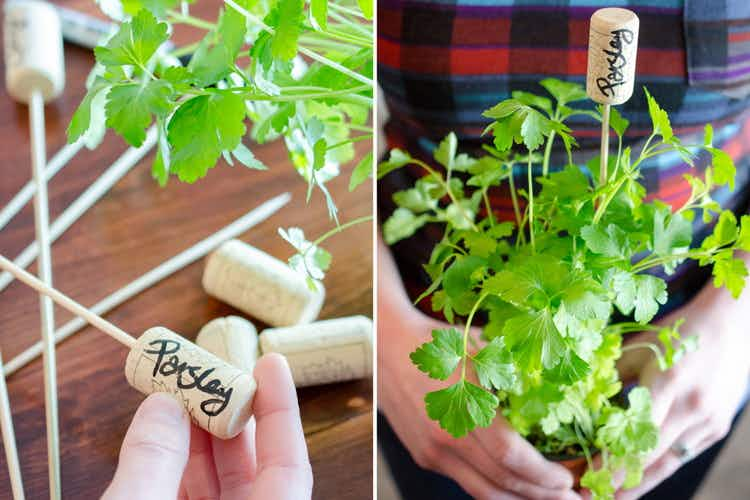
Having a hard time differentiating between parsley and cilantro? Believe it or not, wine can help. Don’t blame it on the alcohol, though; blame it on mislabeling. Try leftover wine corks to label your herb garden. Just write the name on the cork, attach it to the end of a wooden skewer, and insert the stick directly into the plant.
When you need to restock your bottles, add a few wine coupons to your cart.
19. Potatoes turn into a garden remedy to deter rolly pollies.

What keeps eating your strawberries and beans?! Rolly pollies are active, especially at night. Use a root vegetable as a non-toxic garden remedy by cutting a raw russet potato in half, and carving out the middle.
Place the potato face down in the garden overnight. Use gloves to pick it up carefully, and you should see several bugs gnawing on the potato innards instead of your precious leaves, fruits, and vegetables. These bugs are good at eating away toxins like heavy metals, so you might want to check the toxicity level of your soil.
20. Use food scraps as a garden idea to start new plants.
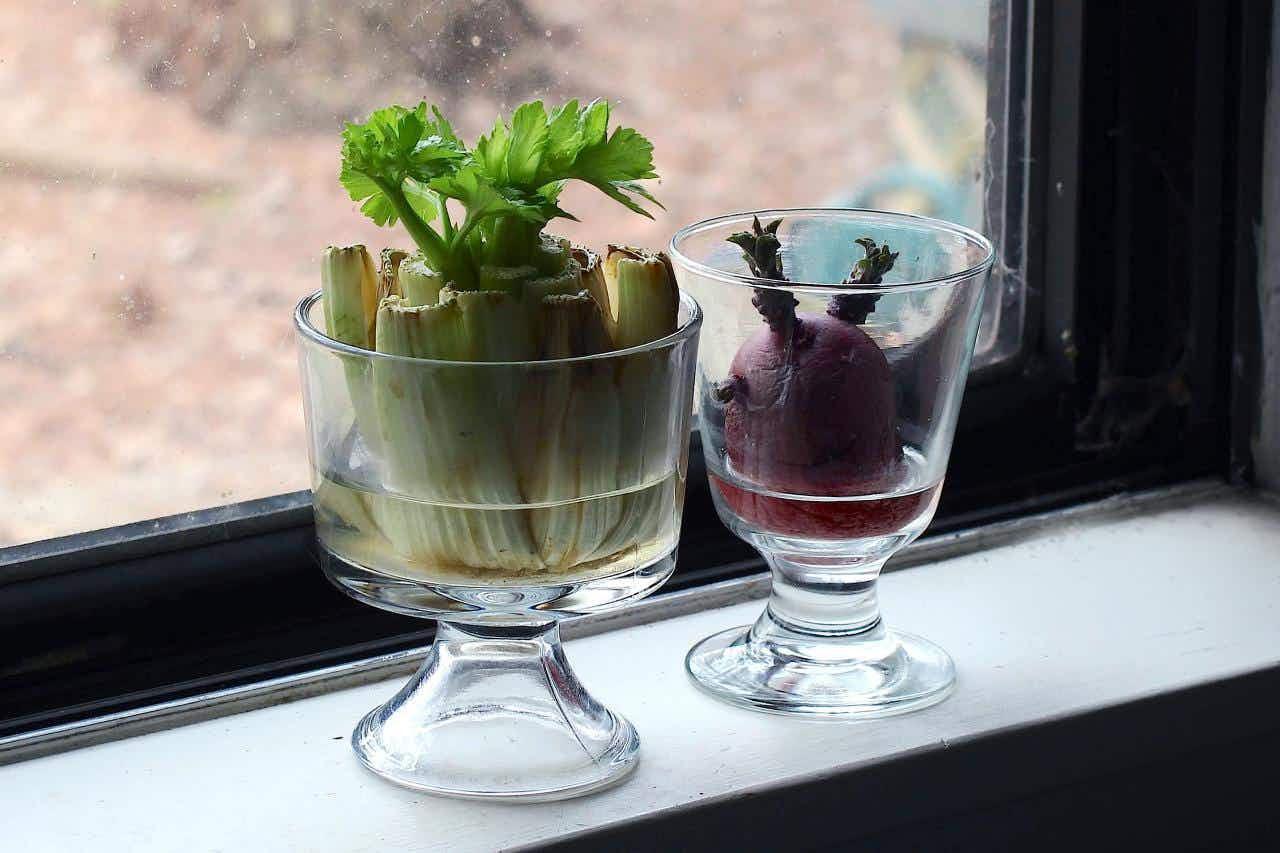
This easy gardening idea allows you to eat your favorite foods over and over. For example, to regrow romaine lettuce, remove the leaves and keep the core stem. Place the cut base into a shallow container with water. Sit it in a spot with natural light, and refill the container with water as needed.
After about 10 days, you should start to see new leaves appear. Transfer it to a bigger, more permanent container once roots have sprouted.
Here are other vegetables that you can try:
- Spring onions
- Celery
- Garlic
- Beets
- Basil
- Cilantro
Plus, find out how much money you can save by growing your own vegetables.
21. Use your garden plants to avoid mosquitos.

Have mosquitoes been bugging you? Stop paying those high prices on citronella candles and take matters into your own dirt-filled hands — plant mosquito-repellant herbs and garden plants.
Did you know that you can actually buy a citronella plant? Plant it in the spring in warm soil and place the plant in full sun for best results. Beware that citronella is toxic to pets, so position the pots away from where they may be.
Other natural mosquito deterrents include:
- Lemon balm
- Peppermint
- Basil
- Marigolds
- Lavender
- Rosemary
Removing standing water is also a useful mosquito repellent.
22. Companion gardening is the tip you need to grow your herb garden.
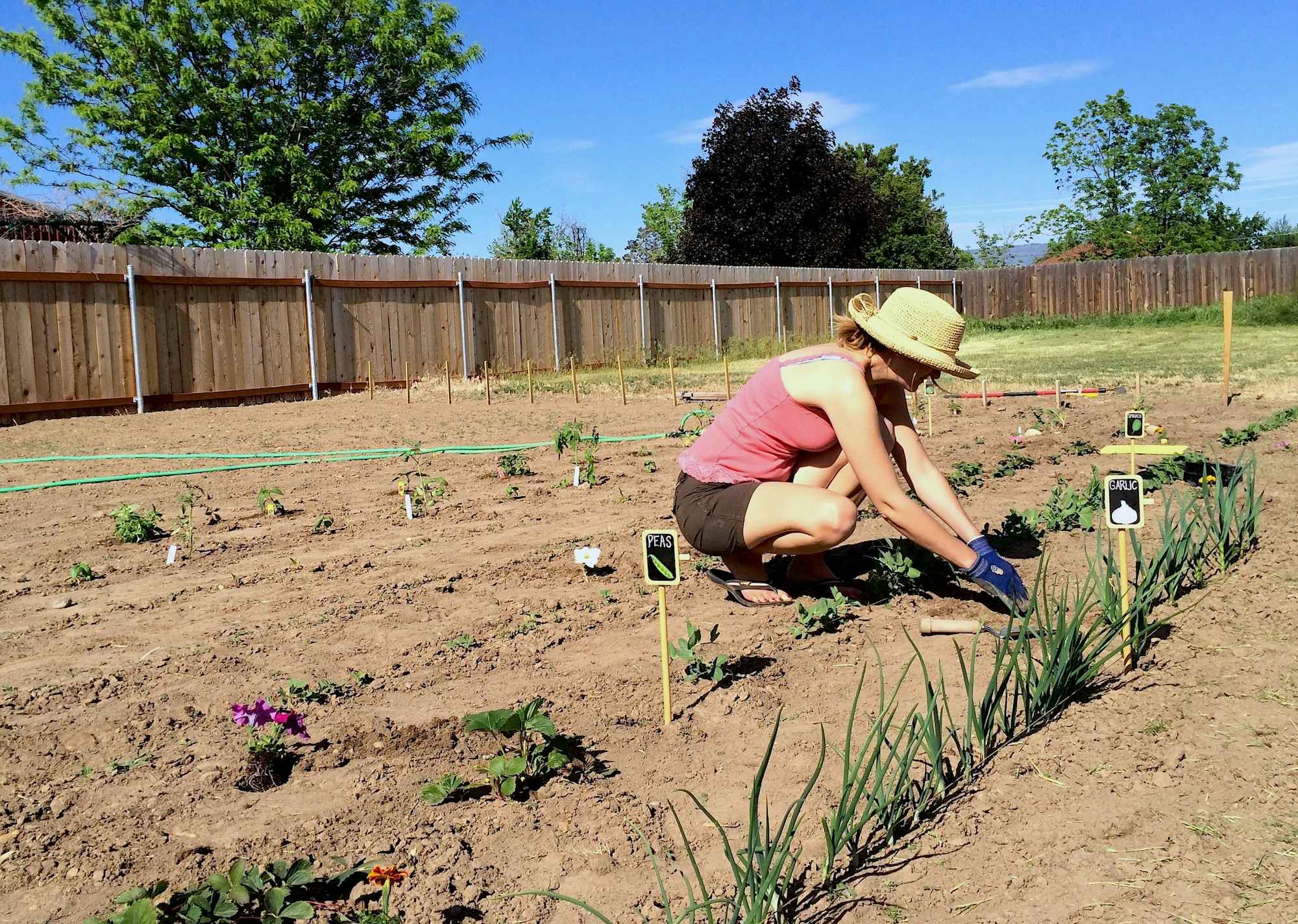
If you’re new to gardening or just looking for new gardening ideas, be sure to make a plan to pair like plants together for the best results. This practice benefits the plants nutritionally, can encourage pollination, and may produce more crops. Here are a few best friend examples to keep in mind:
- Basil and tomatoes
- Bell peppers and spinach
- Basil and bell peppers
- Mint and lettuce
What’s really important to keep in mind is that pairings will differ based on climate, soil, water levels, and seedlings. Since it’s not an exact science, you may have wonderful results with a pairing deemed incorrect.
You can refer to companion gardening books or visit the Farmer’s Almanac for free planning advice. Companion gardening can also help by deterring insects like mosquitoes.
23. Tea + oats = a genius garden soil fertilizer.

Here’s a TikTok garden idea that uses two simple household items. In a heat-proof container, empty the contents of one dry black tea bag and stir in 1 tablespoon of dry oats (no flavored oats needed here).
Add 2 cups of boiling water and let it steep for at least one hour. Let cool and strain the liquid. Add to a spray bottle and use your homemade fertilizer as protein (and for potassium and nitrogen) for plants as well as a method to hydrate and nourish them. Be sure to use organic tea and oats to minimize pesticides.
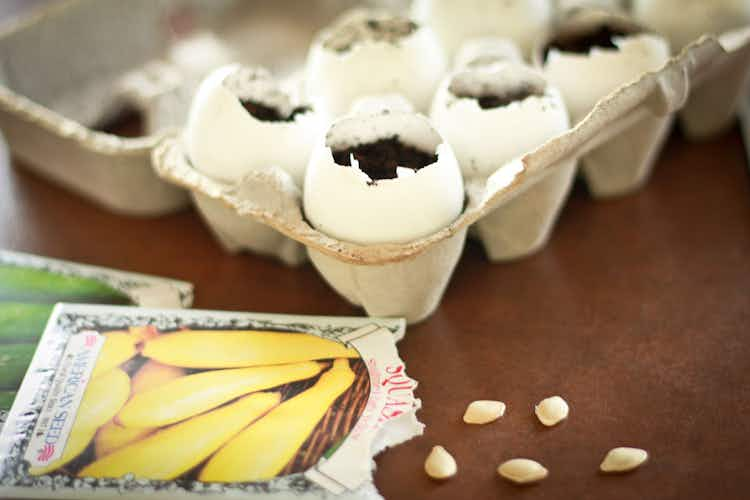

Tell us what you think